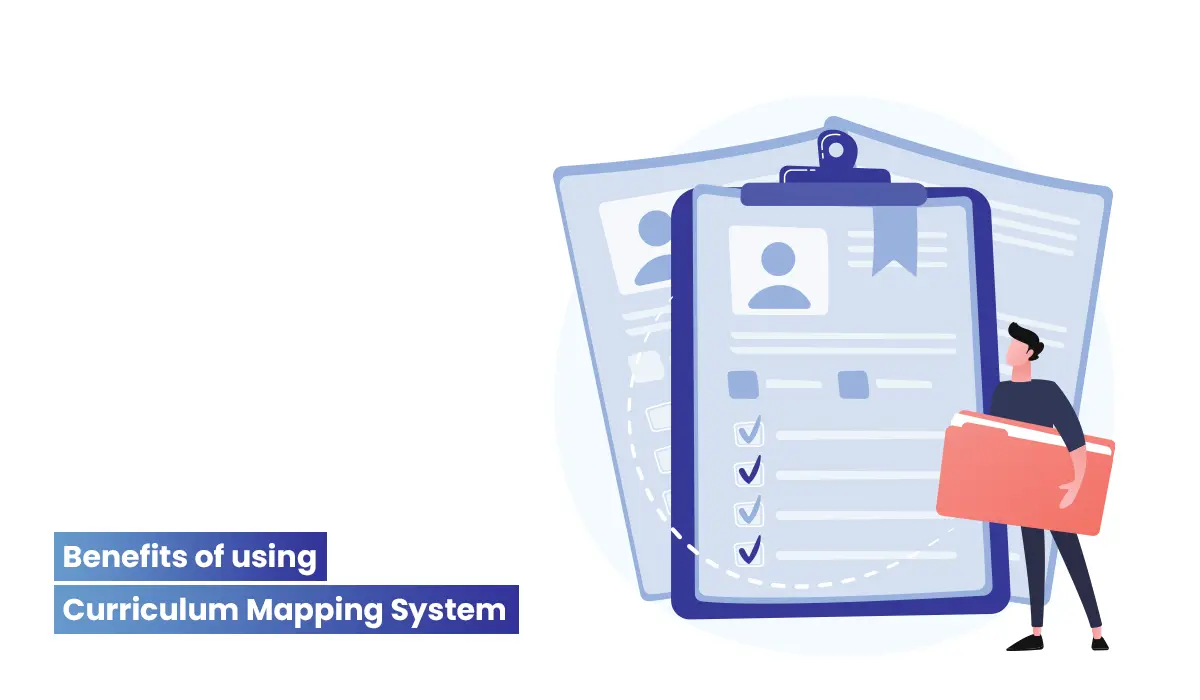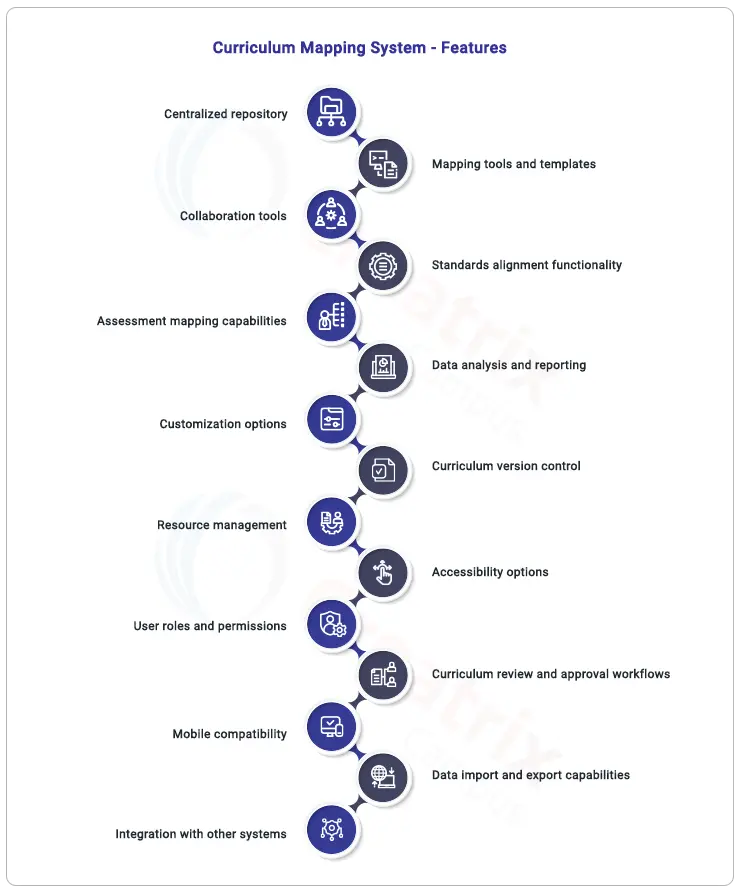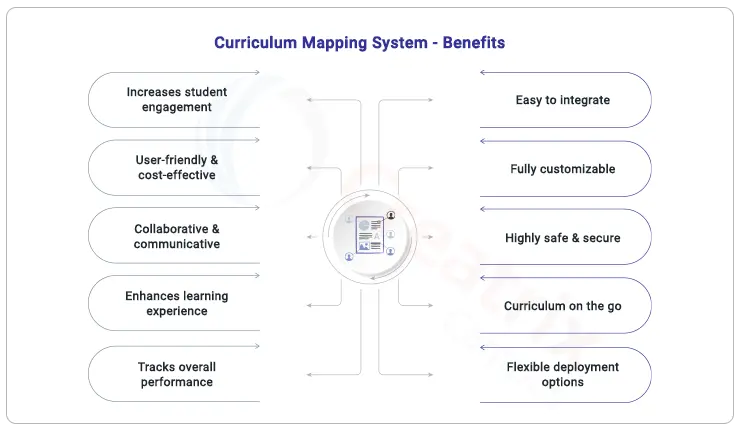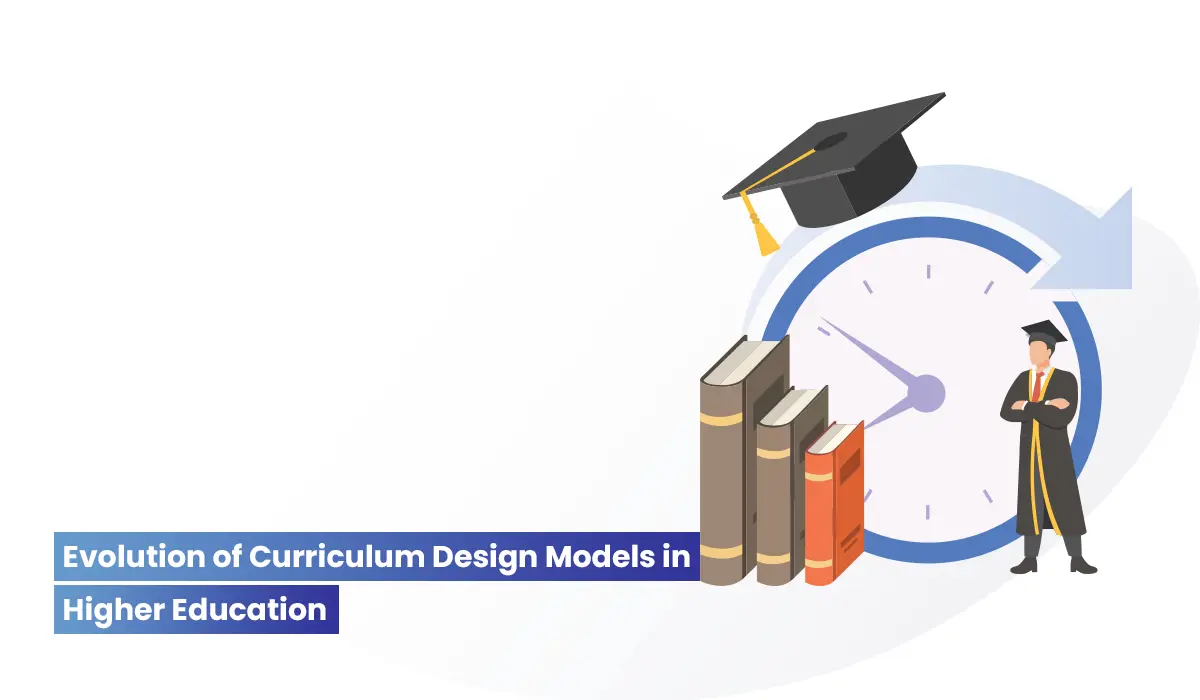10 benefits of using the curriculum mapping system

Colleges and universities are now more challenged than ever to raise student attainment levels. As educators it is necessary to give students the best education we can, giving them the abilities and information they need to succeed. Implementing an effective curriculum mapping system is crucial for achieving this. This method has proven to have enormous advantages for educational institutions in the United States. Recent results from the National Centre for Education Statistics show that institutions that adopted a curriculum mapping approach saw notable advancements in several areas..
We'll go over the top ten advantages of employing a curriculum mapping system that is specially designed for the demands of the US educational environment in this blog post. These benefits apply across all educational levels, demonstrating the transformative power of a well-designed curriculum mapping system.
What is a curriculum mapping system?
A curriculum mapping system is a comprehensive tool or software designed to support the process of curriculum mapping. It provides educators with a centralized platform to document, organize, analyze, and communicate the various components of a curriculum, such as learning objectives, standards, assessments, and instructional resources. A curriculum mapping system typically offers features and functionalities that facilitate the mapping process and enhance curriculum management.
What is the purpose of Curriculum Mapping
Mapping your curriculum serves several important purposes in higher education.
Clear organization:
Curriculum mapping provides a visual representation of the scope and sequence of your curriculum. It helps educators and administrators understand how various components of the curriculum, such as subjects, topics, skills, and assessments, are interconnected and build upon one another. This clear organization helps ensure a coherent and logical progression of learning.
Alignment with standards and goals:
By mapping your curriculum, you can align it with educational standards, learning objectives, and institutional goals. It allows you to ensure that your curriculum covers the necessary content and skills outlined by relevant standards, and helps you identify any gaps or redundancies in the curriculum.
Curriculum coherence and consistency:
Mapping your curriculum promotes coherence and consistency in teaching and learning. It helps educators deliver a consistent educational experience across different classes, grade levels, or departments. When educators have a shared understanding of the curriculum's structure and objectives, it enhances collaboration, promotes consistent instructional practices, and facilitates effective vertical and horizontal alignment.
Curriculum improvement and evaluation:
Curriculum mapping provides a framework for ongoing evaluation and improvement. By visualizing the curriculum, you can assess its effectiveness in meeting the intended learning outcomes. Mapping allows you to identify areas where adjustments or enhancements are needed, enabling you to make informed decisions about curriculum revisions, instructional strategies, and assessment methods.
Communication and transparency:
A mapped curriculum enhances communication among educators, administrators, students, and other stakeholders. It serves as a common reference point for discussing curriculum-related matters, facilitating conversations about instructional approaches, sequencing of topics, and assessment strategies. It promotes transparency and understanding of the curriculum's intent and scope.
Student-centered approach:
Mapping the curriculum can help educators take a student-centered approach to instruction. By visualizing the curriculum, educators can identify opportunities to differentiate instruction, address individual student needs, and provide appropriate support and challenges. Mapping also enables educators to design coherent and purposeful learning experiences that promote deep understanding and meaningful engagement for students.
Features of Curriculum Management System

A curriculum management system often provides several features that help educational institutions effectively manage their procedures for developing, implementing, and evaluating their curricula. These are some crucial characteristics of curriculum management systems that are frequently seen:
- Centralized repository for storing and accessing curriculum-related information
- Mapping tools and templates for visualizing curriculum connections and alignments
- Collaboration features for educators to work together on curriculum development and refinement
- Standards alignment functionality to ensure the curriculum meets relevant standards
- Assessment mapping capabilities to align assessments with learning objectives and standards
- Data analysis and reporting features to analyze student performance and curriculum effectiveness
- Customization options to adapt curriculum maps, templates, and reports to institution-specific needs
- Curriculum version control to track and manage changes to the curriculum over time
- Resource management for organizing and accessing instructional materials and resources
- Accessibility features to support diverse learners and comply with accessibility standards
- User roles and permissions to control access and editing rights for different stakeholders
- Curriculum review and approval workflows to ensure quality and consistency
- Mobile compatibility for accessing the curriculum mapping system on various devices
- Data import and export capabilities for easy integration with external data sources or sharing with stakeholders
- Integration with other systems, such as learning management systems or student information systems
Benefits of Curriculum Mapping System
A curriculum mapping system offers several benefits for educational institutions, teachers, and students. Here are 10 key advantages of curriculum mapping system:

1. It Increase Student Engagement
Curriculum mapping fosters a sense of direction, purpose, and personalization, which are key drivers of student engagement. With options to create and analyze curriculum with compliance to standards, the curriculum mapping system is a powerful tool designed for teachers using cutting-edge technology to make continuous learning improvements and increase student achievement.
Also when students have a visual representation of the curriculum and can see the connections between different topics and concepts, it helps them understand the purpose and relevance of their studies. This clarity empowers students to take ownership of their learning and make meaningful connections between different subjects or modules.
2. It is simple, User-Friendly and Cost-Effective
The curriculum mapping system is an easy-to-use and affordable solution for educational institutions. By cutting back on the time spent with manual processing, institutions can automate, simplify and streamline curriculum tasks to make teachers more effective.
3. It's Collaborative
Curriculum Mapper allows real-time communication and collaboration between teachers and students to make informed decisions. Because of this, the instructors can readily collaborate to construct units, especially transdisciplinary units, even when common meeting times are scarce. It also enables curriculum coordinators to collaborate closely and effectively with teachers, so promoting the general faculty culture of collaboration.
4. It Enhances Learning Experience and Instruction Delivery
A curriculum mapping process must be followed to improve a course's learning experience for students. A glance back at the previous year might provide several examples of how the course could be better matched with student expectations. The course content can be changed and improved to ensure the program remains relevant.
Teachers can upload documents, files, and images to their curriculum maps and provide role-based access to students to view the attachments. Cloud-based class scheduling software allows easy access to curriculum, syllabus, and lesson plan data wherever you are.
5. It tracks the performance
Curriculum mapping is an ongoing process focused on student learning and success. The curriculum mapping process is a reflective exercise in which educators can evaluate the previous year's teaching and learning experiences. They can evaluate the course content and its relevance, the learning outcomes, and if the course content matches the learning needs of their students.
A good curriculum mapping software allows institutional users to create dashboards and reports on curriculum data including assignments, examinations, tests, and assessments to help teachers and administrators track and analyze the impact of curriculum maps on student achievement.
6. It Offers Individualized Instruction
With a curriculum mapping system, teachers can identify the specific needs and learning styles of individual students. By mapping learning objectives and assessments, educators can differentiate instruction to accommodate various student abilities, interests, and learning preferences. This promotes personalized learning and helps students reach their full potential.
7. There’s Assured Long-Term Planning
A curriculum mapping system supports long-term planning by providing a comprehensive view of the curriculum across grade levels and subjects. Educators can identify vertical and horizontal alignment, identify prerequisites, and ensure a smooth progression of skills and knowledge. Additionally, the system allows for tracking student progress, identifying areas for intervention or enrichment, and informing data-driven decision-making.
8. It Aligns with Standards and Accreditation
Curriculum mapping systems facilitate alignment with educational standards, such as state or national guidelines, ensuring that the curriculum meets required benchmarks. Furthermore, for schools seeking accreditation, these systems provide evidence of curriculum planning, implementation, and assessment practices, contributing to the accreditation process.
9. There’s Enhanced Communication with Stakeholders
Curriculum mapping systems improve communication among teachers, administrators, parents, and other stakeholders. Educators can easily share curriculum maps, learning objectives, and assessments with parents, enabling them to understand what their children are learning. Additionally, administrators can review curriculum implementation, provide feedback, and make informed decisions based on the data and insights provided by the system.
10. It Helps Continuously Improve and is Adaptable!
A curriculum mapping system supports continuous improvement and adaptability by providing educators with a mechanism to assess the effectiveness of their curriculum and instructional practices. Through the system, teachers can gather data on student performance, identify areas of strength and weakness, and make data-informed adjustments to the curriculum to better meet the needs of students. This iterative process allows for ongoing refinement and enhancement of the curriculum over time, leading to improved teaching and learning outcomes.
Streamline your curriculum with Creatrix Campus
Implementing curriculum mapping in your higher education institution requires dedicated time and effort. However, Creatrix Campus offers a comprehensive platform that can empower your faculty to take control of the curriculum mapping process.
With Creatrix Campus Curriculum Strategy, educators can collaborate seamlessly while creating accessible curriculum maps. Gone are the days of storing curriculum plans in folders or on hard drives. The Creatrix Campus platform allows instructors to easily upload their lesson plans, resources, activities, and more, facilitating collaboration and enabling colleagues to compare curriculum maps. This collaborative approach allows you to build comprehensive course catalogs and handbooks that outline each course offered at your college.
Ready to explore the benefits of curriculum mapping with Creatrix Campus? Take the first step by signing up for a demo today and discover how our platform can streamline and enhance your curriculum management processes.



